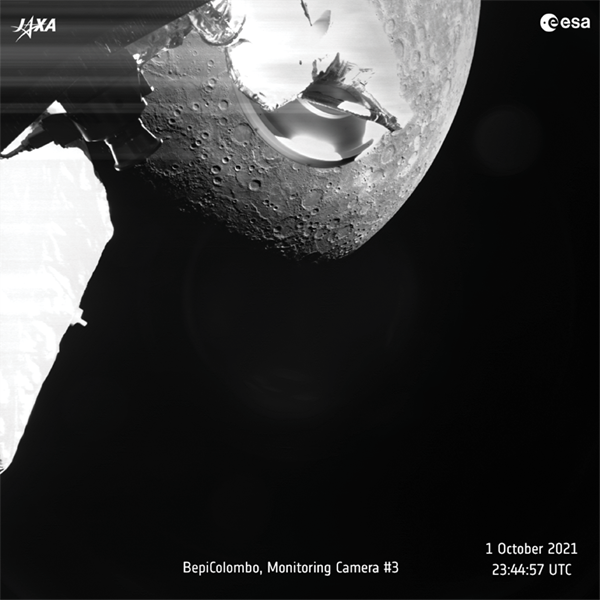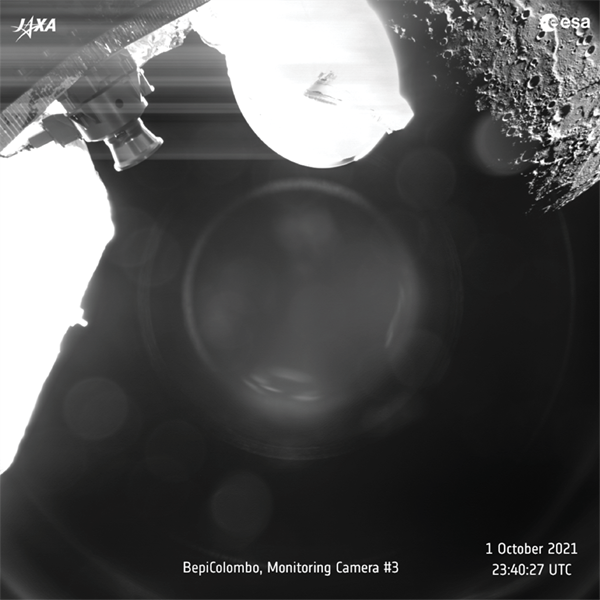The latest mission to Mercury is off to a great start!
On October 1, BepiColombo — a joint venture between the European Space Agency (ESA) and the Japan Aerospace Exploration Agency (JAXA) — made its closest approach to Mercury yet, snapping a few images before beaming them back to Earth. Although the new views of the solar system’s innermost planet may resemble shots of Moon, they also mark the ground-breaking mission’s first (but far from last) up-close images of Mercury.
However, the conditions weren’t ideal for a photo shoot of the tiny planet, and that’s because BepiColombo flew by Mercury’s nightside. Still, in many of the images, large impact craters are clearly visible.
BepiColombo’s cameras captured a number of black-and-white images at a resolution of 1,024 by 1,024 pixels. In many of the images, pieces of the BepiColombo spacecraft are clearly photobombing the views of the diminutive planet, which, due to its proximity to the Sun, is quite difficult to investigate.
Over the next few years, BepiColombo, which is comprised of two orbiters (ESA’s Mercury Planetary Orbiter and JAXA’s Mercury Magnetospheric Orbiter), will reveal as much as it can about this oft-ignored world. In particular, researchers hope to gain a better understanding of Mercury’s core, surface activity, magnetic field and exosphere, and, ultimately, how the planet evolved.
These new images barely qualify as the start of the multi-year expedition. BepiColombo’s primary mission doesn’t to begin until early 2026. And to get into position, it will complete nine planetary passes (one at Earth, two at Venus, and six at Mercury). The spacecraft’s next close flyby of Mercury will be June 23, 2022.











